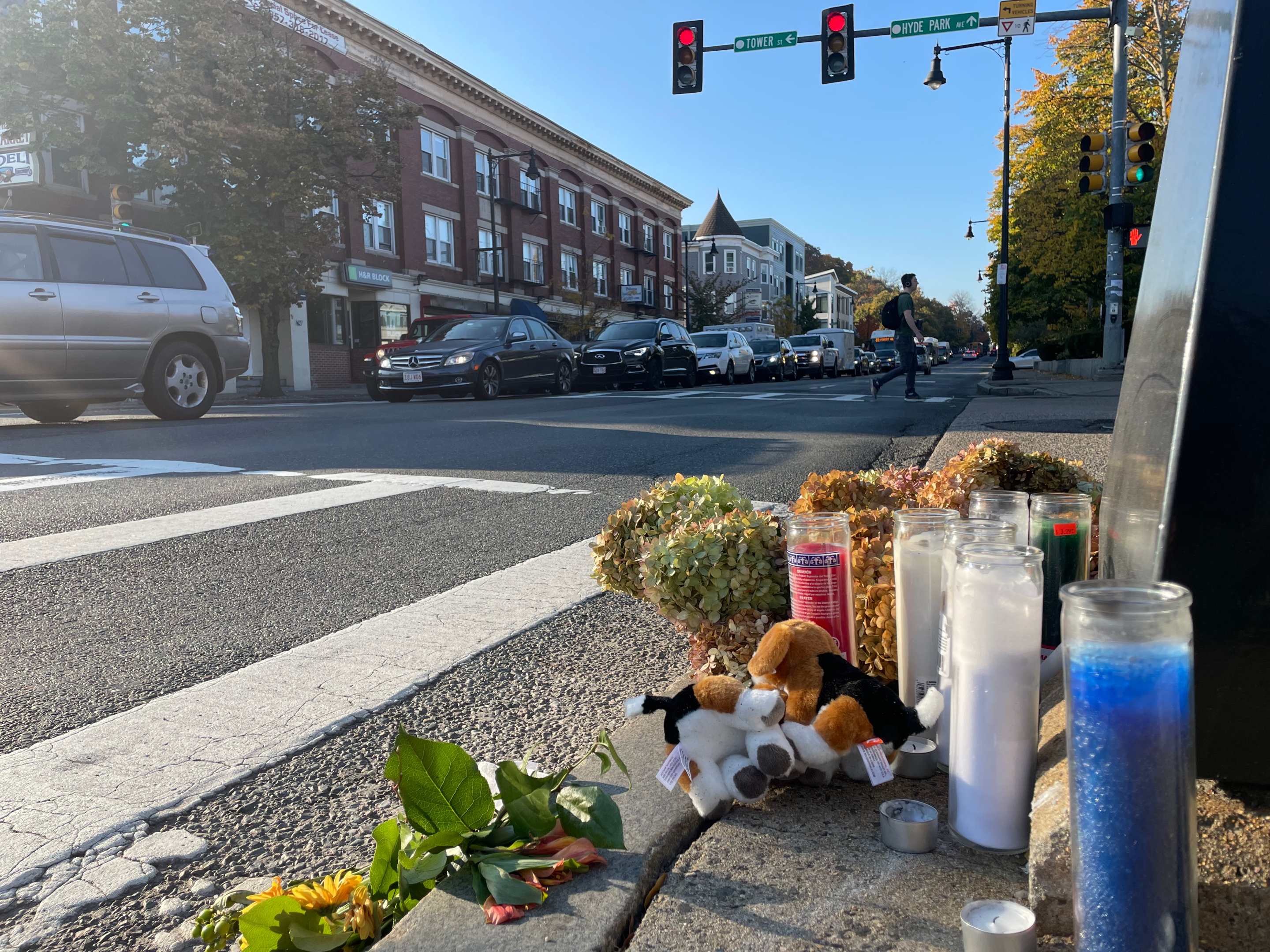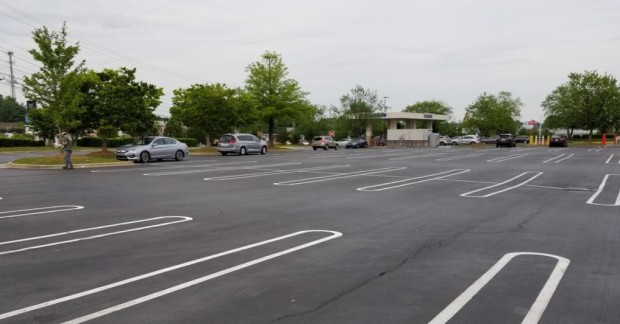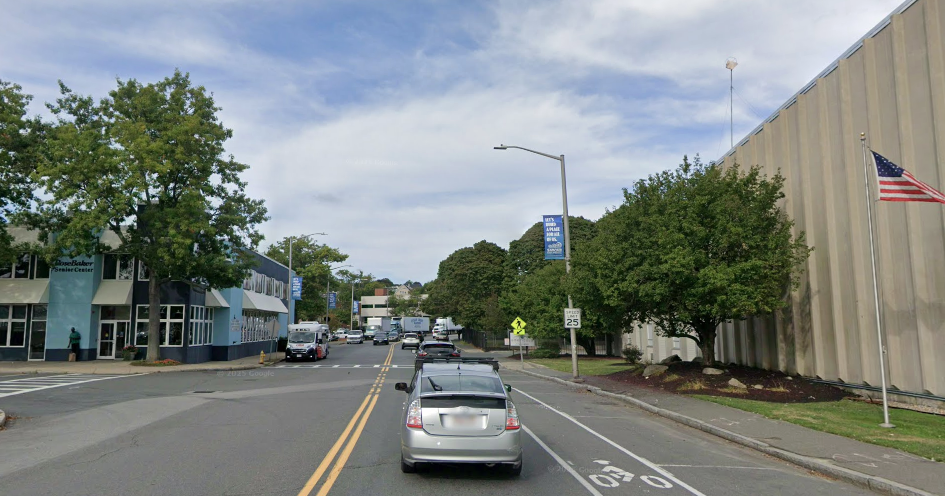Following a week of activism from neighbors, the City of Boston promised to make short-term changes this fall to improve pedestrian safety near Forest Hills station, while also advancing a longer-term effort to redesign Hyde Park Avenue.
As we reported earlier this month, an MBTA bus driver struck and killed Glenn Inghram in a crosswalk outside the Forest Hills busway on Saturday, Oct. 12.
Within a few days, Forest Hills neighbors posted an online petition to demand immediate safety improvements for the area from the City of Boston, MassDOT, and the MBTA.
On Monday, many of those same neighbors organized a vigil for Inghram on Tower Street, near the site of the crash. The next day, the City of Boston's Chief of Streets, Jascha Franklin-Hodge (who lives in nearby Jamaica Plain) responded to the neighborhood's requests for safety improvements.
"We will implement a fully-protected pedestrian signal phase at Tower Street within the next two weeks, barring unforeseen circumstances," wrote Franklin-Hodge. "Once in place, all vehicle movements will be prohibited while pedestrians are crossing."
Currently, "walk" signals across Hyde Park Avenue at Tower Street are active at the same time as the green light for the side streets, yet all of the vehicular traffic that enters the intersection from Tower Street or from the Forest Hills busway must make a right or left turn through the intersection's crosswalks.
In other words, if the bus driver who struck and killed Glenn Inghram earlier this month had a green light as they exited the Forest Hills station busway, then Glenn Inghram likely had a walk signal at the same time.
The city also plans to make changes to traffic signals to improve protection for pedestrians in two considerably larger intersections nearby, at Arborway and Washington Street (to the northeast of Forest Hills station) and at Arborway and South Street (to the immediate north of the station).
However, the city does not have a specific timeline for implementing those signal changes along the Arborway, which is a state-owned roadway.
Redesigned street still in the planning stages
Franklin-Hodge's letter to neighbors expressed an openness to consider additional changes that neighbors had requested – including the construction of new curb extensions to improve visibility at crosswalks, or the addition of new crosswalks across Hyde Park Avenue – but he also cautioned that more substantial changes would require more time to plan, design, and construct.
In 2020, just before the Covid-19 pandemic, the City of Boston launched a planning effort to redesign Hyde Park Avenue with traffic-calming safety improvements.
Preliminary designs suggested that the street could gain new protected bike lanes that would connect the Hyde Park neighborhood to the Southwest Corridor, plus new bus lanes for the MBTA's route 32 buses.
But the pandemic put that planning effort on hold.
In an October 2 email to neighbors, the Boston Transportation Department wrote that "public meetings that were initially planned for early fall will likely be delayed again to early winter" and that "an additional, less maximalist concept is being developed for the northern section of HPA (Hyde Park Avenue)."
In his response to neighbors this week, Chief of Streets Franklin-Hodge acknowledged that the city was still considering "an array of possible design options on the corridor" but also added that "improving safety is non-negotiable, and will be a key goal of any future design."
On Wednesday morning, Benjamin Siegel, a neighborhood resident who helped distribute the safety petition, told StreetsblogMASS that "it sucks that (the city) is in reactive mode. I was hoping to hear that there was a proactive vision for what this place would look like. It doesn't seem to exist."
To sign up for updates on the city's Hyde Park Avenue Multimodal Corridor planning project, visit the City of Boston's project website.






